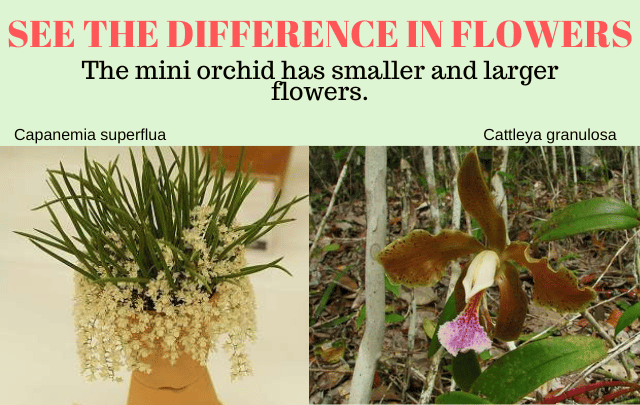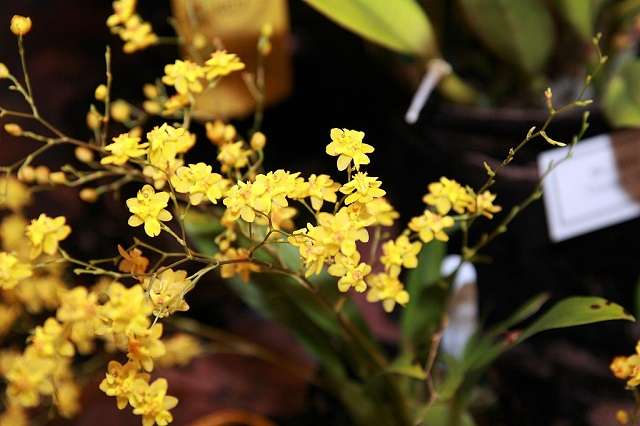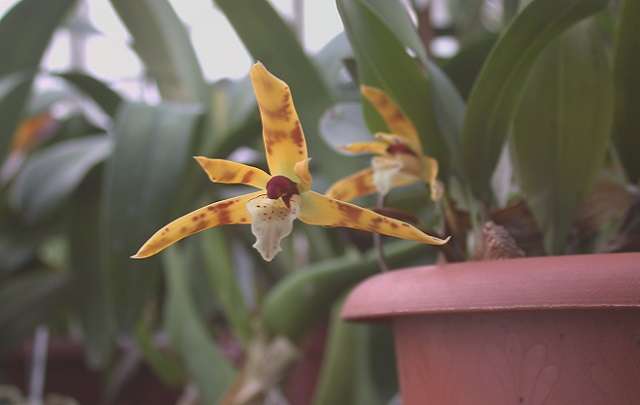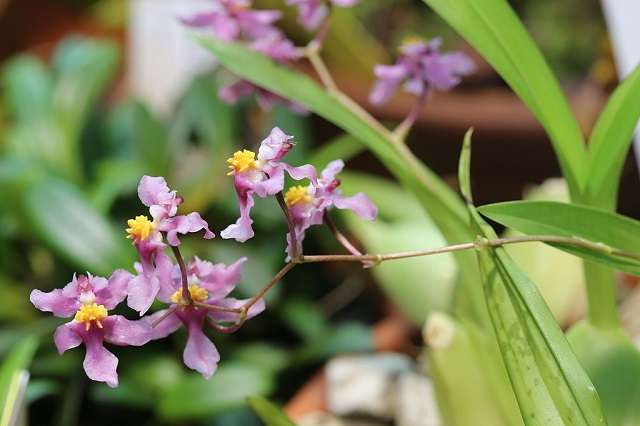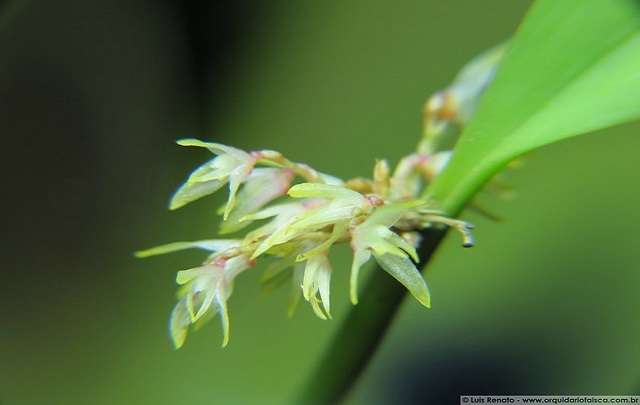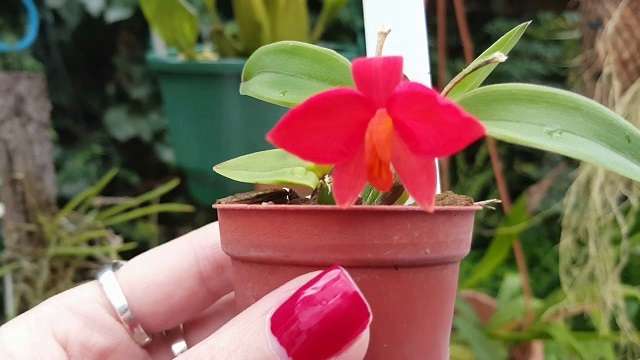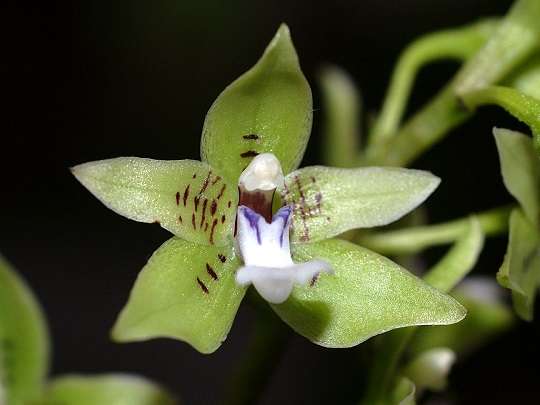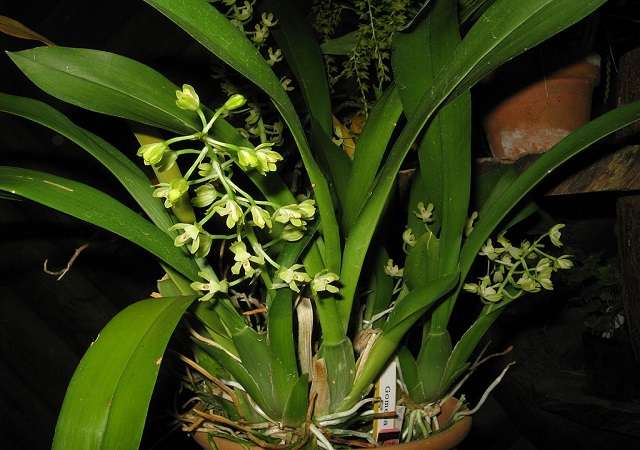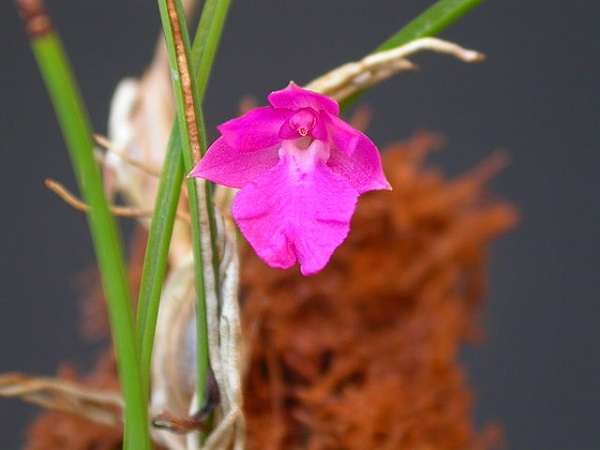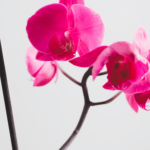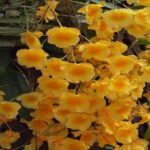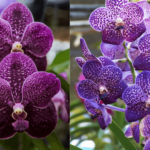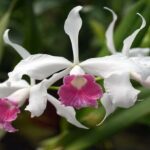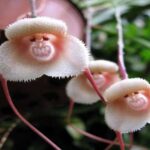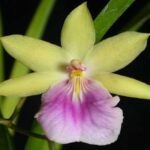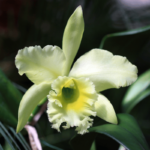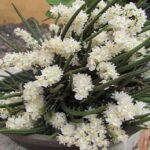Do you know what mini or mini orchids are?
Do you want to see pictures and also discover which are the main species?
If your answer was positive to any of these questions, keep reading.
In this article, you will discover everything about these curious orchids:
- What they are
- Their species
- How to cultivate them
- And much more.
In this article, you will learn everything about mini or micro orchids.
So, keep reading.
What are Mini Orchids
Mini orchids or micro orchids are small-sized plants that usually have flowers smaller than 1 cm; they are mostly epiphytic and found in nature, but can also be artificial.
Despite this classification, we can also find several species of miniature orchids with slightly larger flowers than 1 cm.
This is a “popular classification.”
Cultivators were the ones who started differentiating orchids by their size.
Usually, orchids of this type are very small, reaching a maximum of 40 cm (15,7 inches).
As for their flowers, they probably have to be observed under a magnifying glass.
Species of Mini Orchids
Below are some of the most famous species of mini orchids.
- Oncidium Twinkle
- Rodriguezia venusta
- Mini Masdevallia
- Mini Cattleyas
- Miltonidium
- Maxillaria Schunkeana
- Maxillaria tenuifolia.
- Oncidium sotoanum
- Pleurothallis Parviflora
- Capanemia superflua
- Mini Phalaenopsis
Oncidium Twinkle “Yellow Fantasy”
This is an orchid resulting from crossings, that is, it is not natural.
Considered one of the most beautiful species among the oncidium, this species can generate blooms with dozens of flowers every year.
Orchids with very small flowers try to compensate for this disadvantage by producing them in large quantities.
In addition, these micro orchids are often perfumed to attract pollinators, essential for the species’ propagation and perpetuation.
It is true that, in the case of Oncidium Twinkle, being a hybrid orchid, its scent probably does not have the power to attract a specific insect, as it does not exist in nature.
Its sweet fragrance reminds me of the aroma of vanilla, which, by the way, is a spice produced by another orchid belonging to the Vanilla genus.
Rodriguezia venusta
The veil-of-bride orchid Rodriguezia venusta is an epiphytic plant.
It can be found in most of South America.
Regarding its size, it usually does not exceed 20 cm (7,8 inches) and produces several flowers that last an average of 10 days.
This is a plant easy to cultivate that likes to be hung on trees.
It is watered just before the potting mix dries completely, and the humidity should be around 70%.
Masdevallia Gutierriezii
Masdevallia is a genus of orchids consisting of 636 very small species.
They usually have triangular-shaped flowers and are native to America.
To cultivate them, you must provide low temperatures, small pots, and never plant them in soil.
Cattleyas
Normally, Cattleyas are plants that have large, beautiful, and showy flowers.
But some researchers have sought through crosses to develop mini cattleyas.
These are still uncommon orchids and have a slightly more complicated cultivation.
An example of this type of cattleya is the mini Cattleya magenta.
Miltonidium
Orchids of this type are the result of crosses between species from the following genera:
They are usually small plants and easy to cultivate.
They can produce dozens of flowers that last an average of 20 days.
An example of a plant is Miltonidium ruffles.
Maxillaria
Not all Maxillaria can be considered mini orchids.
As stated in this article, the flowers of this genus can vary from 1 to 15 cm (0,4 to 5,9 inches), depending on the species.
Some of the most famous miniature orchids of this genus are Maxillaria Schunkeana and Maxillaria tenuifolia.
Mini Phalaenopsis Orchid
Formerly, mini Phalaenopsis were rarer, as only those considered “natural” were sold.
But with the development of crosses between species, this story changed.
The genus Doritaenopsis was born.
A cross between Phalaenopsis and Doritis orchids.
Thanks to this, today there are several mini and micro phalaenopsis found in orchid nurseries.
These are orchids with very durable and beautiful blooms, with the vast majority being easy to cultivate plants.
Oncidium Ornithorhynchum
Its true name is Oncidium sotoanum; this orchid is a bit peculiar due to its smell. While some growers find it incredible, others hate the smell that this plant’s flowers exude.
It is an orchid from Central America that especially lives in milder climates.
Its blooms are very beautiful and produce several flowers.
Pleurothallis Parviflora
This is a rare mini orchid that can be found in various parts of America, even here in Brazil.
It is an extremely small epiphytic plant that can be planted in various locations.
This micro orchid was recorded in the 19th century and is still very little known.
Capanemia superflua
Described in the year 1863, Capanemia superflua is a Brazilian mini orchid.
Its name comes from its flowers and means superfluous.
This happened because at the time people considered this orchid as a species without importance.
This is an epiphytic plant that produces dozens of flowers, between 7 mm and 10 mm (0,27 and 0,4 inch).
The flowers last between 10 and 15 days.
Sophronitis Acuensis
The Sophronitis acuensis is an orchid found in the southeastern region of Brazil.
Living on top of trees, it is mainly found in the Serra dos Órgãos at an altitude of around 2100 meters.
Regarding its flowers, they have a vibrant color and can reach up to 4cm (1,57 inch).
Even with larger flowers, it is still considered a mini-orchid.
As for its cultivation, it prefers the following conditions:
- High humidity, about 80%
- Moderate temperatures, between 15 to 25°C (59 to 77°F)
- High, indirect light, approximately 70%
It blooms in autumn and produces flowers that last about 15 days.
Paradisanthus Micranthus
Another mini-orchid that deviates from the “recommended standard,” as its flowers typically reach 2cm (0,8 inch).
This is a mini ground orchid that blooms in summer.
It prefers indirect light and warm weather.
Growing up to 25cm (10 inches), Paradisanthus micranthus has green flowers with small markings.
Gomesa Recurva
In honor of the Portuguese physician Bernardino António Gomes, the Gomesa genus is very similar to oncidiums.
Gomesa recurva is a native epiphytic mini-orchid.
It has abundant flowering and can support dozens of flowers every year; its flowers are fragrant and typically range from green to yellow.
Sophronitis Cernua
Sophronitis cernua blooms in early summer, producing small and numerous flowers.
Described in the 19th century, it is well-known for the beauty and strong color of its flowers.
Moreover, it was the first of the Sophronitis species to be discovered, found near Rio de Janeiro.
It prefers:
- High air humidity
- Good ventilation
- Grow it hanging on trees or wooden trunks.
Isabelia Pulchella
“Isabelia pulchella is a fast-growing orchid, forming beautiful and robust clumps quickly.
It has an epiphytic habit and is native to southeastern and southern Brazil (Rio de Janeiro, São Paulo, Paraná, Santa Catarina, and Rio Grande do Sul).
This species grows epiphytically in the so-called Seasonal Semideciduous Forest, in this case represented by the Atlantic Forest biome, and by the Mixed Ombrophilous Forest, also known as Araucaria Forest, both ecosystems with high rainfall throughout the year.”
https://orquideasjph.wordpress.com/2018/07/01/isabelia-pulchella/ (article in Portuguese)
Ornithophora Radicans
Discovered in 1864, this is an epiphytic plant found in the Atlantic Forest.
It is an orchid that is easy to grow and very resistant.
It blooms in summer, lasting between 20 to 30 days.
How to Care for Miniature Orchids
To learn how to care for mini orchids, you need to answer a question:
What is the difference between a miniature orchid and a normal orchid?
If you answered size, you are correct.
But…
Remember that a smaller orchid is also more “sensitive.”
Therefore, caring for mini orchids must be a bit more careful.
Here are some tips for you to properly care for your miniature orchid.
Where and How to Plant
The planting location follows the same rules as normal orchids, namely:
- Epiphytic orchids should never be planted in the ground.
- Ground orchids, or terrestrial ones, should never be planted on trees.
- Pots are safe options for all species.
- The pot should be slightly larger than the orchid, but not too big.
To plant your micro or mini orchid, follow the steps below:
- Select a new pot (preferably larger).
- Choose the ideal potting mixes for your orchid (usually those that provide good aeration for the orchid are great options).
- Soak the potting mix for 24 hours to remove pests that might be in it.
- Prune parts of your orchid, make the cut about 2 to 2.5 cm above the top node of the stems.
- Carefully remove your orchids from the pot.
- Clean and cut the dead roots (usually dead roots are dark and soft).
- Place the chosen potting mix at the bottom of the new pot, leaving space for the orchid.
- Fit your orchid so that the lowest leaf is slightly above the pot’s rim.
- Wait a few days before watering your orchid again; for a week or more, just mist your plant.
How to Provide the Right Climate
All orchids need specific climates to flourish.
While some species like higher temperatures, others prefer the cold.
Therefore, you need to find out your plant’s needs regarding the following requirements:
- Humidity
- Temperature
- Ventilation (usually it should be a ventilated place, but without very strong winds)
- Lighting (in the article spots on orchid leaves, you learn to look at your orchid’s leaves to understand if it needs more or less light.)
How to Water
Watering is another very important factor that will determine whether your orchid will be healthy or have frequent problems.
Watering should be done after the potting mix dries or a little before, depending on your species.
But in both cases, you should wet your orchid through the roots.
Avoid getting the leaves wet.
Watering can be done with a hose or a watering can, thoroughly wet your plant.
Fertilizing Mini Orchids
Fertilization is another factor that mimics the cultivation of normal orchids, but in smaller quantities.
For example, the following fertilizers are typically used in orchids:
- Bokashi
- NPK 20 20 20
- Castor bean cake
- NPK 10 10 10
These are fertilizers that can be used in most orchids, and what you will do is simply use them in smaller quantities in your miniature orchid.
Repotting
Orchids are typically repotted every 2 or 3 years, depending on the species.
But in the case of mini orchids, we must remember that their roots grow faster.
Therefore, this interval can be shorter.
On average, you will have to repot your orchid every 2 years.
To replant, follow the steps indicated in the section on how and where to plant.
As for the best time, you will only reppot your micro orchid during the growing season, as this is when your orchid has the most energy.
If you don’t do this, your plant will likely die.
Pests and Diseases
Because they are smaller, miniature orchids are easier to spot pests on their leaves or stems.
Moreover, combating them is simpler due to the small attack area pests have.
To prevent problems, use neem oil.
To combat problems, use a brush or weak fungicides.
Common Questions
Below are some answers to the most common questions about this type of orchid.
Are there yellow mini orchids? White? Red? Black? For all these questions, the answer is yes, there are small-sized orchids with flowers of various colors, for example, the black orchid is a Brasilorchis shunkeana (also known as maxillaria shunkeana).
Where can I find mini orchids? In orchid nurseries and also on the internet.
Conclusion – Mini and Micro Orchids
I hope that with this article, you have learned a little more about these small-sized orchids commonly known as micro orchids.
Remember that anyone can grow most of these species, so start now.
Choose an orchid and start growing it.
Now it’s your turn.
Leave a comment below telling us what you think about these orchids.

